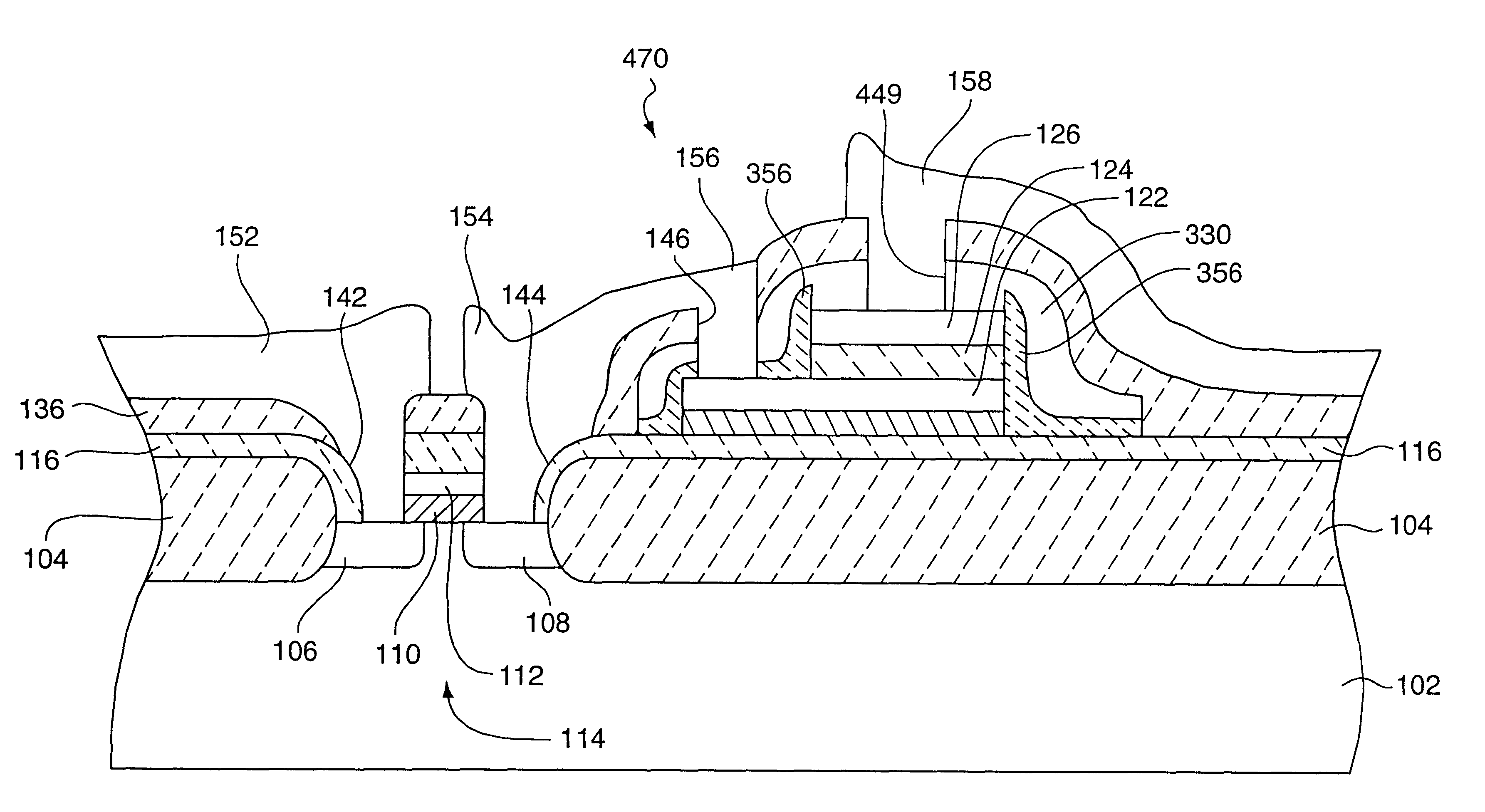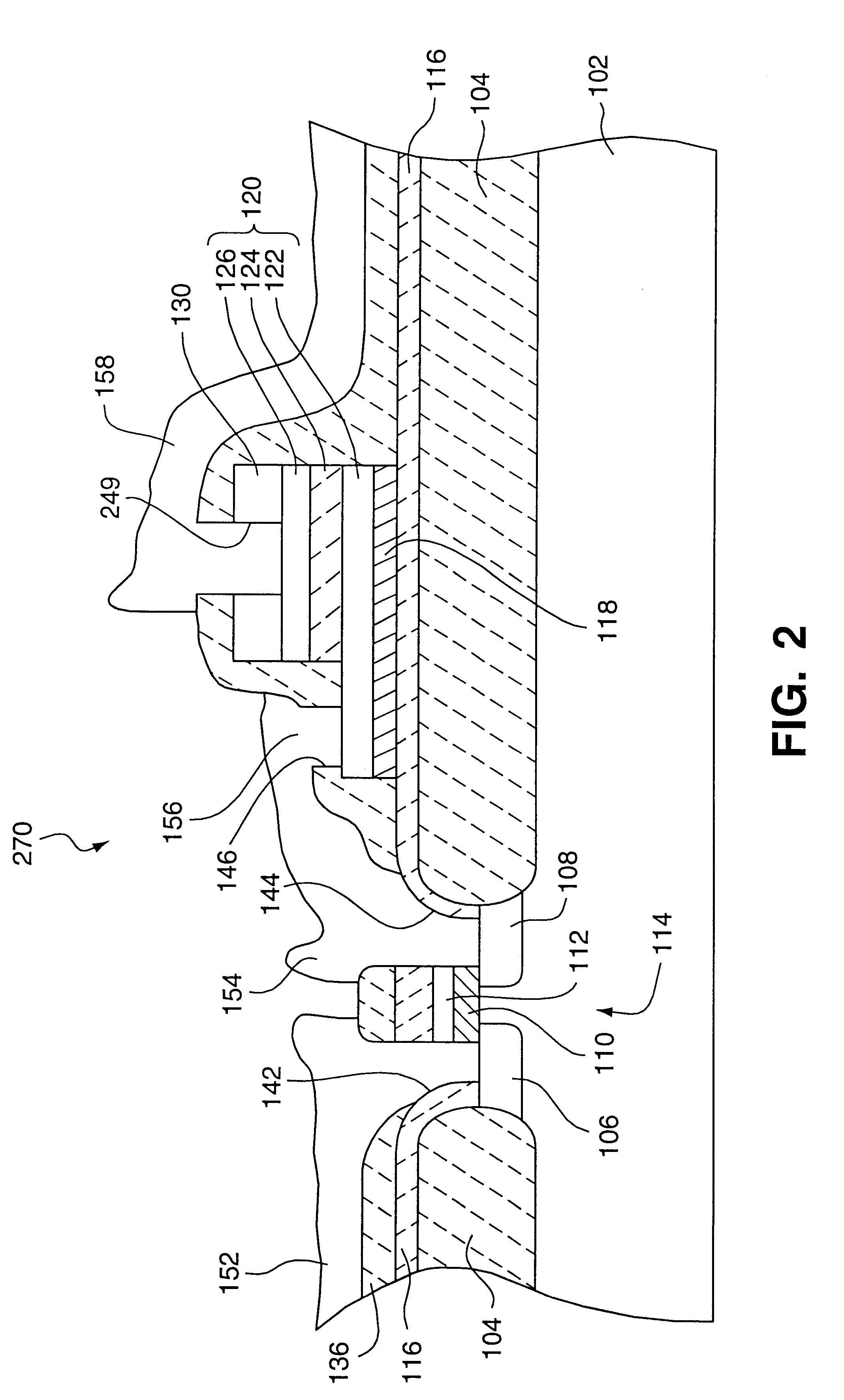Ferroelectric integrated circuit having hydrogen barrier layer
a technology of integrated circuits and hydrogen barriers, which is applied in the direction of electrical equipment, semiconductor devices, capacitors, etc., can solve the problems of deterioration of the electronic characteristics of the mosfet, defects in the silicon substrate, and affecting the economical production of ferroelectric memories and other ic devices in commercial quantities
- Summary
- Abstract
- Description
- Claims
- Application Information
AI Technical Summary
Problems solved by technology
Method used
Image
Examples
Embodiment Construction
of the Fabrication Process
The diagram of FIG. 5 is a flow sheet of the fabrication steps to make a ferroelectric memory 170 incorporating a hydrogen barrier layer 130 in a preferred embodiment of the invention, according to FIG. 1. Ferroelectric memory 170 is preferably formed on a conventional wafer that may be silicon, gallium arsenide or other semiconductor, or an insulator, such as glass or magnesium oxide (MgO). In step 512, a semiconductor substrate 102 (FIG. 1) is provided on which a switch 114 is formed in step 514. The switch is typically a MOSFET. In step 516, a first interlayer dielectric layer 116 is formed to separate the switching element from the ferroelectric element to be formed. In step 518, a bottom electrode layer 122 is formed. Preferably, electrode layer 122 is made of platinum and is sputter-deposited to form a layer with a thickness of about 200 nm. In the preferred method, an adhesion layer 118 made of titanium or titanium nitride of about 20 nm would be for...
PUM
| Property | Measurement | Unit |
|---|---|---|
| temperature | aaaaa | aaaaa |
| thickness | aaaaa | aaaaa |
| thickness | aaaaa | aaaaa |
Abstract
Description
Claims
Application Information
 Login to View More
Login to View More - R&D
- Intellectual Property
- Life Sciences
- Materials
- Tech Scout
- Unparalleled Data Quality
- Higher Quality Content
- 60% Fewer Hallucinations
Browse by: Latest US Patents, China's latest patents, Technical Efficacy Thesaurus, Application Domain, Technology Topic, Popular Technical Reports.
© 2025 PatSnap. All rights reserved.Legal|Privacy policy|Modern Slavery Act Transparency Statement|Sitemap|About US| Contact US: help@patsnap.com



